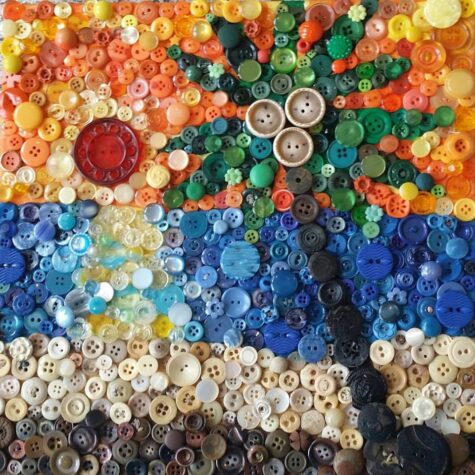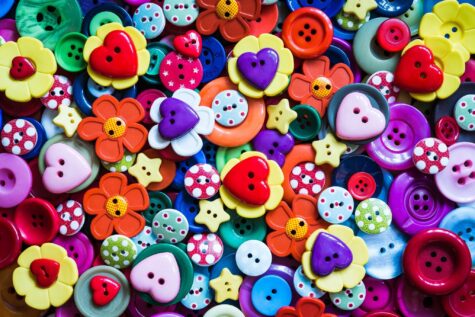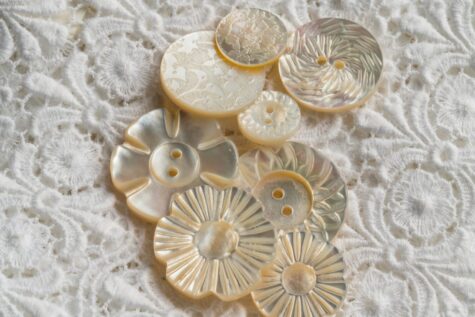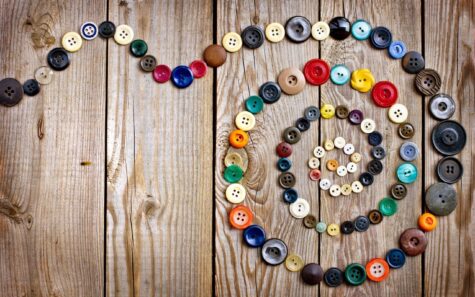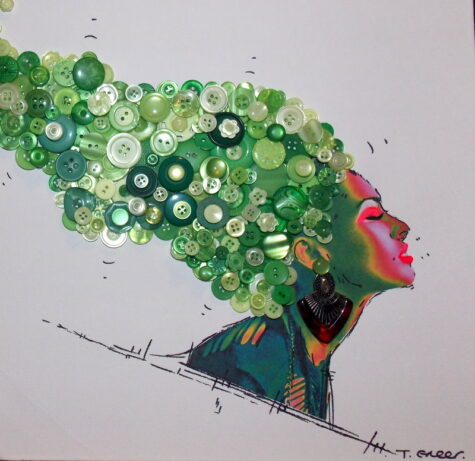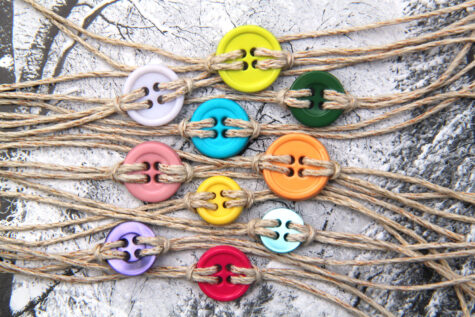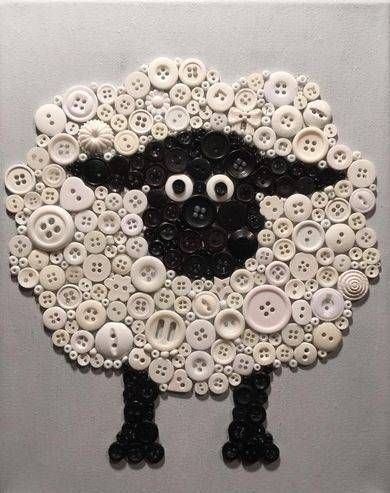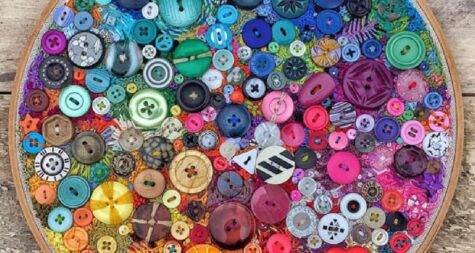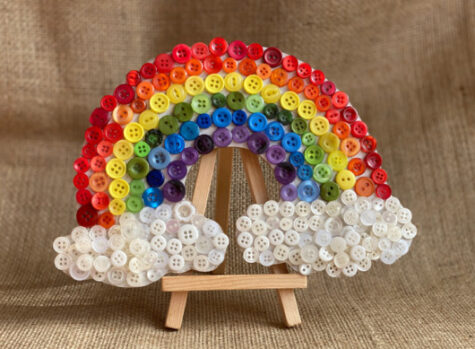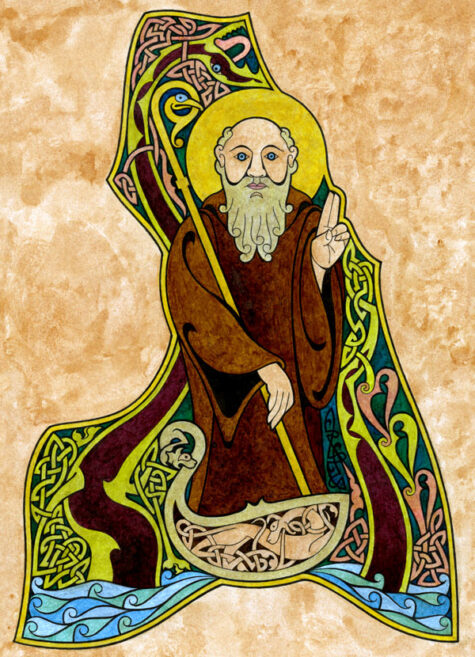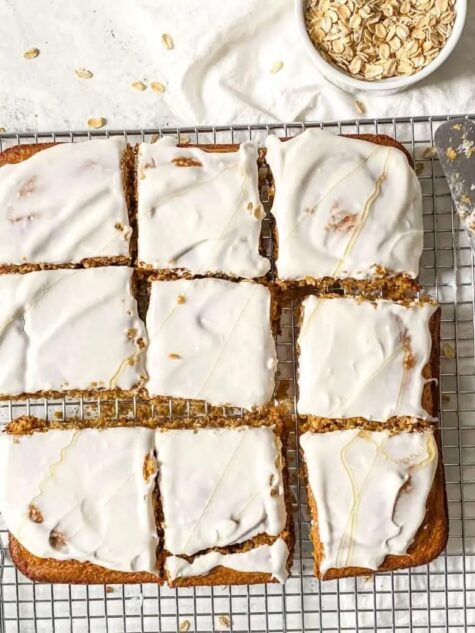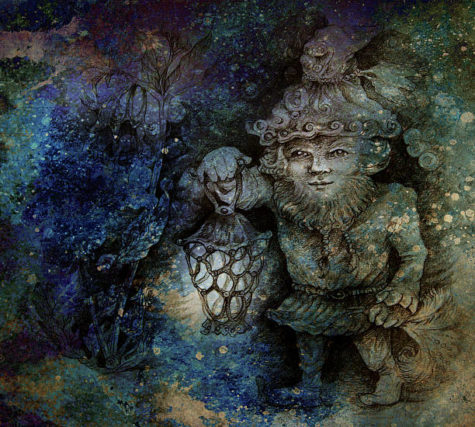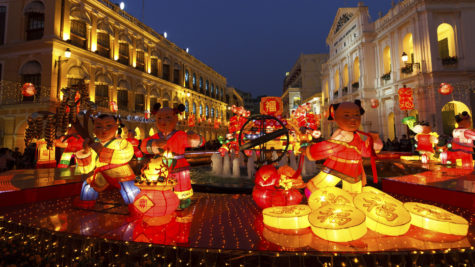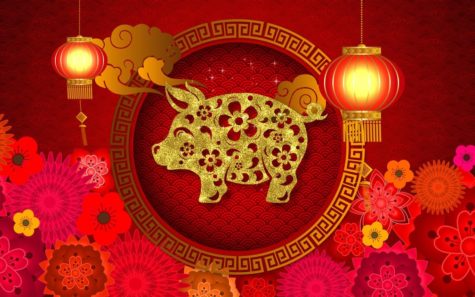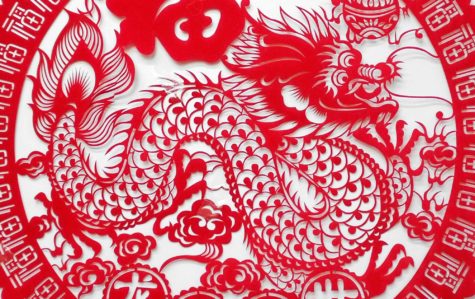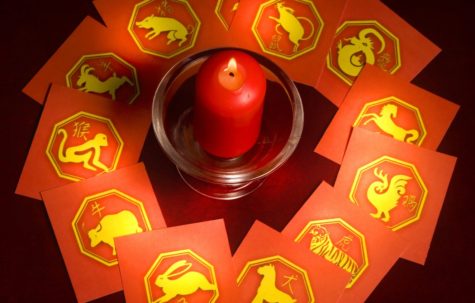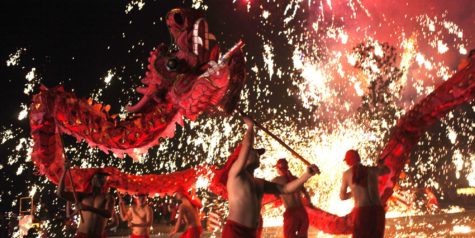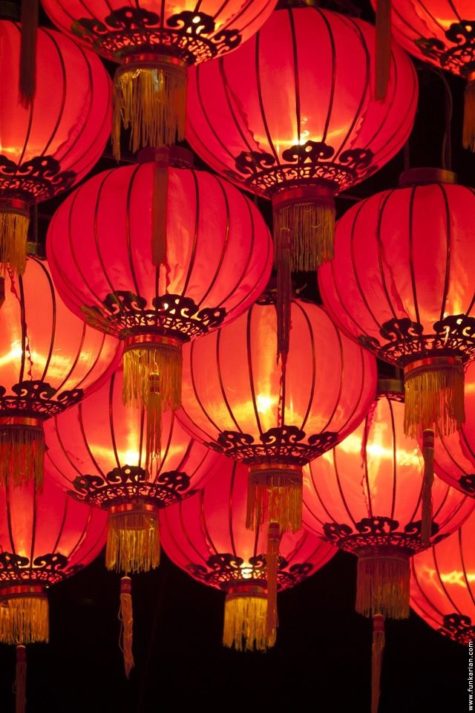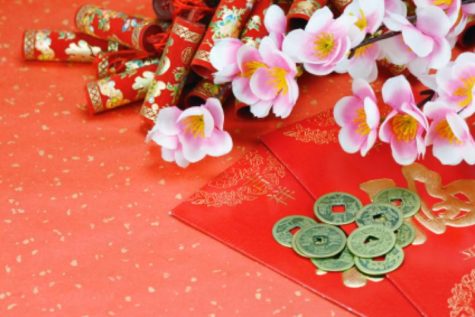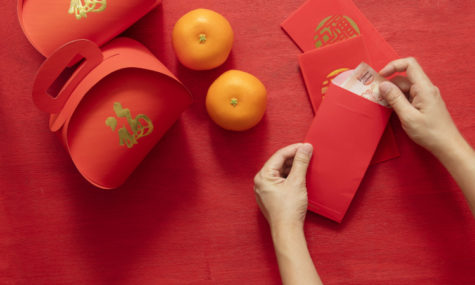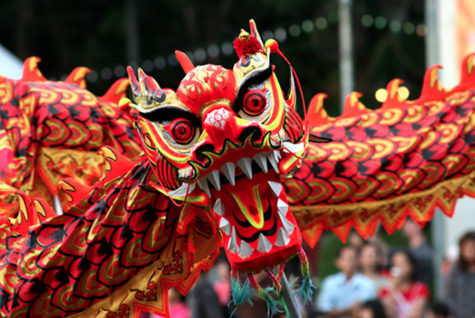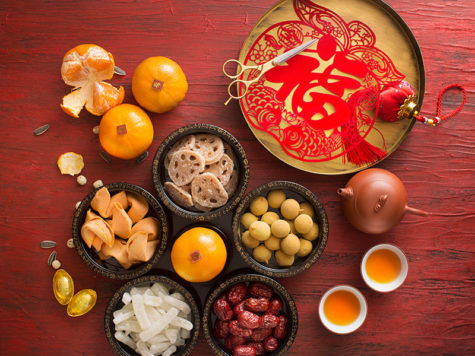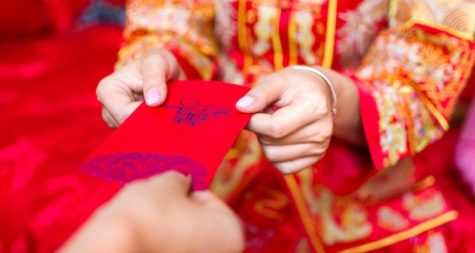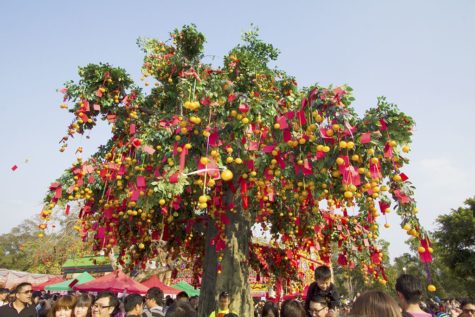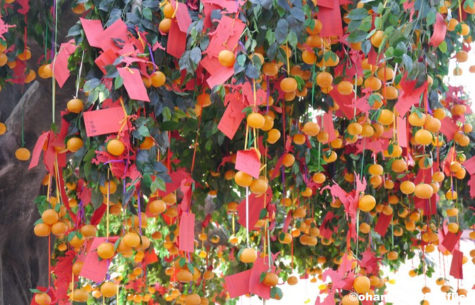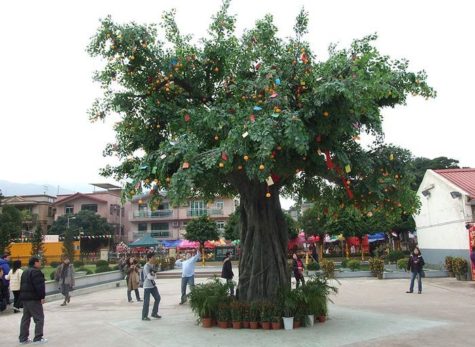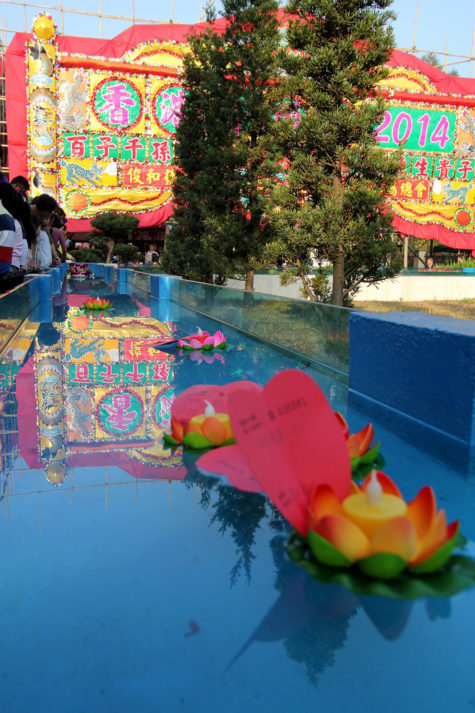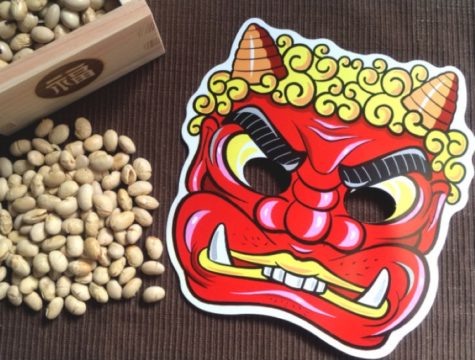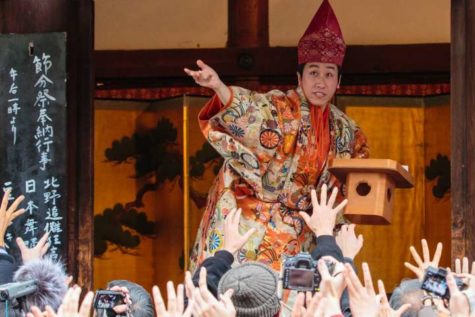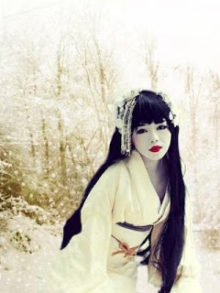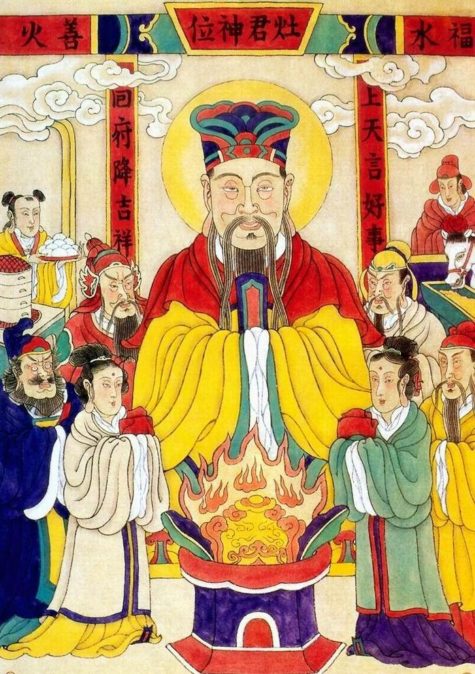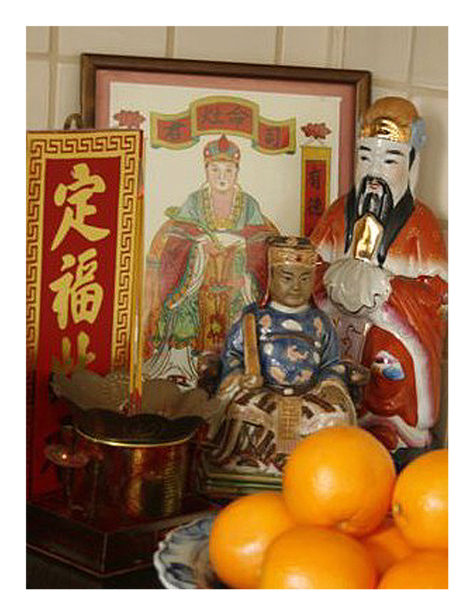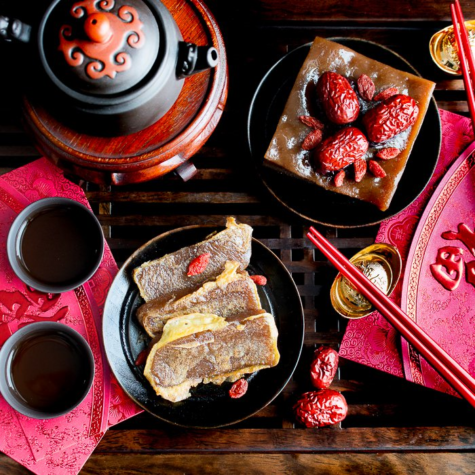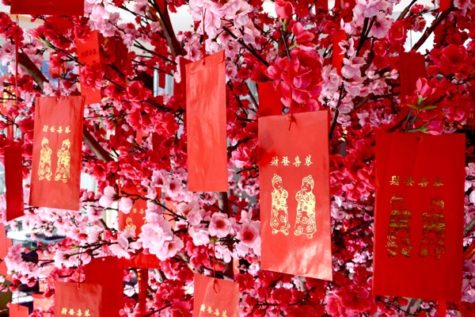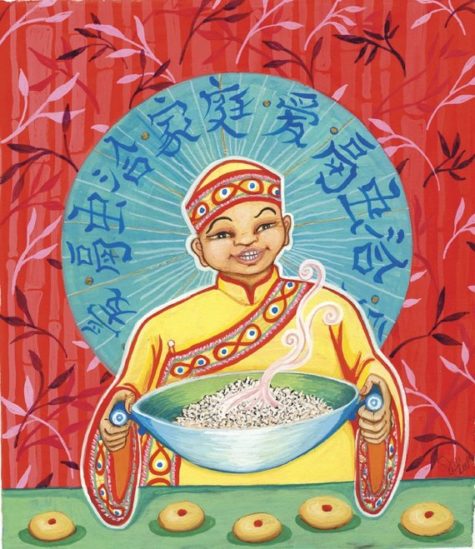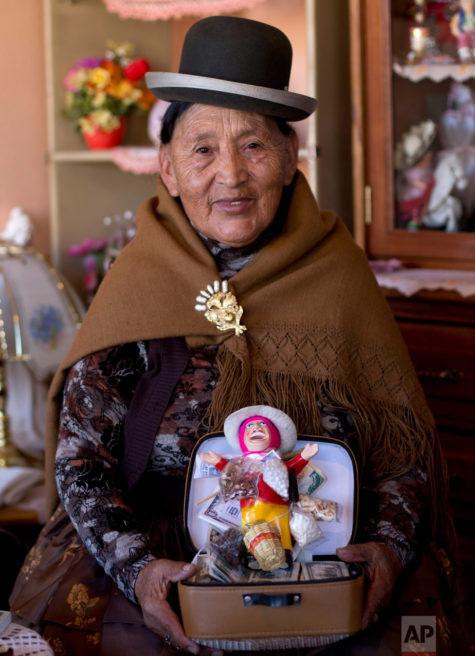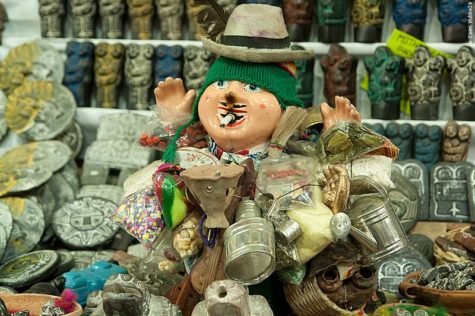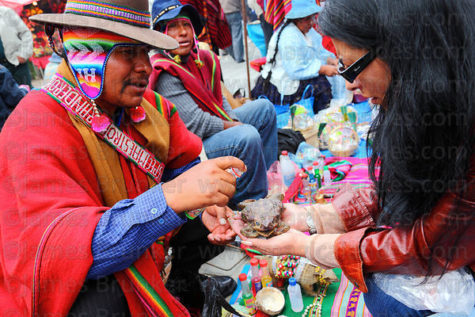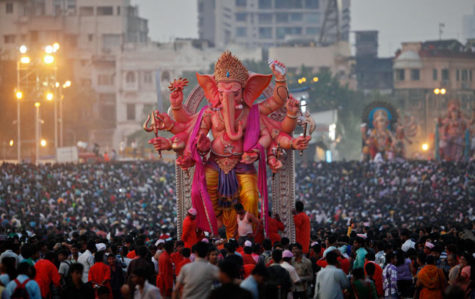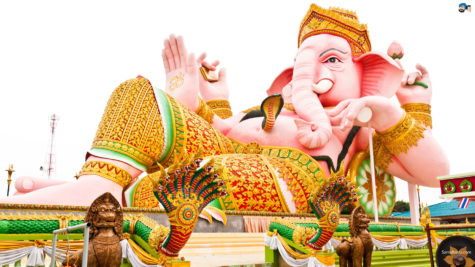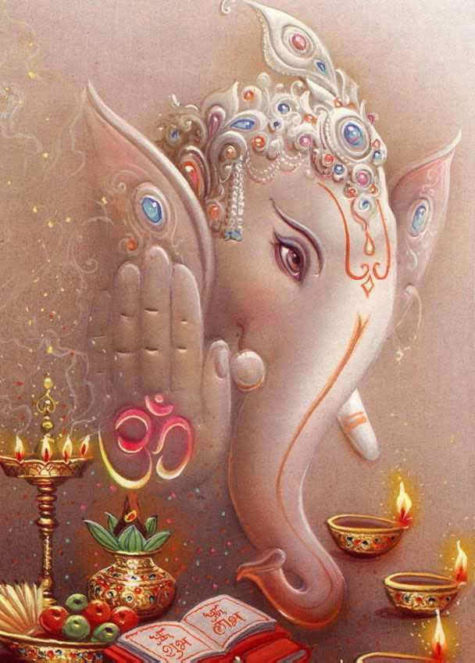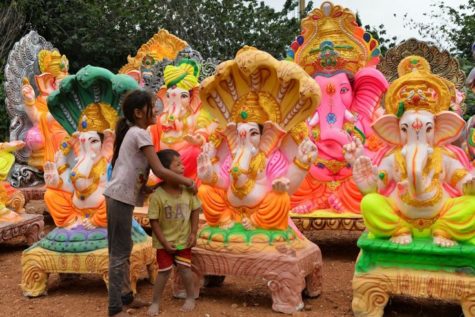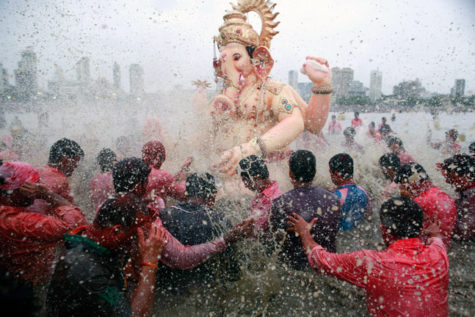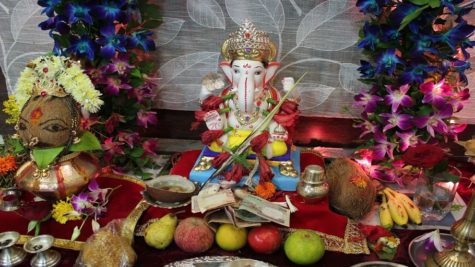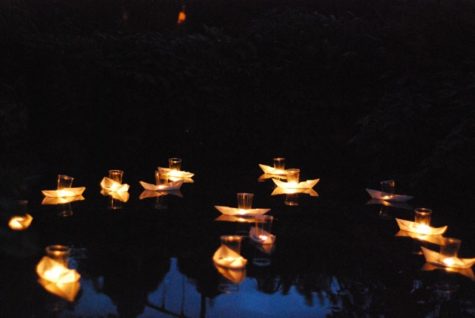Good Luck
National Button Day on November 16th celebrates the function of buttons and the hobby of button collection. Buttons are so commonly found in our clothing that we tend to take them for granted. Buttons have various functions other than just keeping our clothes perfectly together, not denying that it is an important function. They have been used for decorative and gaming purposes as well.
Some people just like to collect buttons for their sparkle and cuteness and others collect signature buttons that have been somehow important to them. There are thousands of button collectors in the United States. Crafters across the country utilize buttons in creative ways. They are some of the best at finding new uses for old items.
Buttons come in different materials, patterns, designs, and sizes. Buttons have been made of a variety of materials. Ancient buttons were formed from natural and readily available substances such as stone, shell, bone, clay, or wood. In more modern times, metals, plastics, resins, and acrylics have been used. While buttons were created to fasten two pieces of cloth together, they also served as decoration.
While buttons today can be simple disks with two or four holes allowing a needle and thread to pass through, button makers create more elaborate designs. If you can imagine it, there’s probably a button like it. From animals and food to iconic buildings and famous people, button makers make them. They’re colorful and fun. While the fun ones may be less practical, they still function.
The origin of buttons can be traced back to 2800 BC where shells were used for making ornaments and seals. However, the buttonholes with buttons as fasteners first emerged in Germany and from there, spread throughout Europe. The buttons were made using the popular materials available during that period. Today, we see buttons mostly made of plastic, metal, wood, or seashells.
Why National Button Day?
The National Button Society was founded after the Hobbies Magazine conducted a hobby show in 1938 and found many participants to be button collectors and thus the National Button Day. Both novice and advanced button collectors celebrate the enjoyment of collecting on this day.
The appeal of buttons is clear. They come in every shape, color and style, from pearly white shirt buttons, to ornate Victorian affairs, to cute fastenings shaped like insects and animals. Any outfit can be updated by adding the right buttons, and sewing them on is one of the easiest types of needlework to learn. And they don’t just belong near buttonholes, either. Clusters of buttons can be used to decorate almost everything, and even on their own in jars they are delightful to handle, play with and admire. Some collect them, but most just lose them. Regardless, nearly everyone seems to love them, or at least regard them with fascination.
In case you may be thinking that buttons do not deserve their own holiday, try to imagine what life would be like without them. Sure, we have zippers and velcro, but could you imagine velcro down the front of your elegant blouse? Of course not!
A Short History of Buttons
It took the buttonhole to popularize the button in medieval Europe. Buttonholes were invented by Moorish tailors as a means of fastening garments and adopted in Europe in the 13th century. Then buttons became so prominent that in some places sumptuary laws were passed putting limits on their use. The earliest evidence comes from 13th-century German sculptures, which show tunics featuring six buttons running from neck to waist.
Buttons in fourteenth century Europe were hand-made in beautiful shapes and colors. They were both costly and decorative and used to boost the ego and attract attention. John Brandon, for example, who died in 1384, was shown with 40 buttons on the sleeve of his undervest alone.
The wearing of gold, silver, and ivory buttons in fourteenth century Europe was an indication of wealth and rank. Expensive buttons were also made of copper and its alloys. The metalsmith frequently embellished such buttons with insets of ivory, tortoiseshell, and jewels.
There was a button mania in the late Middle Ages, resulting, in some outfits adorned with thousands of buttons, all of them with accompanying buttonholes. Dressing and undressing became a laborious process, but created a niche for the employment of professional dressers.
In the 15th or 16th century someone discovered that a loop slipped over a button, or a button pushed through a slit in the cloth, made a better fastener for the close-fitting garments that were coming into style. For some time, however, the chief use continued to be ornamental.
The asymmetrical fastening of jackets of the wrap over style came into fashion in China during the 15th and 16th centuries and was worn by men and women, royalty and peasants. It was the material and the buttons that showed rank. Peasants wore rough cloth fastened with anything that came to hand while the emperor wore silk and furs fastened with jewels.
In the 1700’s metal buttons were used and button covering was created. Metal threads were wound about a button in intricate patterns. Miniature scenes were painted on ivory or glass buttons. Some buttons were engraved and inlaid with silver.
Frederick the Great organised the buttons on soldiers’ coat sleeves being sewed on the top sides of their sleeves. This was to ensure that the soldiers would scratch their faces open every time they tried to wipe their noses on their tunics.
In the middle of the 18th century, Matthew Boulton, the English manufacturer and partner of James Watt, introduced the bright, costly, cut-steel button, which was made by attaching polished steel facets to a steel blank. Matthew Boulton built the Soho manufactory near Birmingham. The factory produced small metal articles such as gilt and silver buttons and buckles.
Noting the abundance of pearl mussels in the nearby Mississippi River, German immigrant J.F. Boepple, founded a pearl button company in 1884 Muscatine, Iowa He produced buttons that looked like pearls by machine-punching them from freshwater mussel shells harvested from the Mississippi River. His button-making factory grew to be the largest manufacturer of pearl buttons in the world. From that time forward, Muscatine was known as “The Pearl Button Capital of the World”.
Celebrating Button Day
Take some time on this day to either go though your existing button collection or start a new one, and enjoy Button Day to the fullest! Who knows, perhaps you possess in your collection an antique button that’s been passed down for so long that you’ve never stopped to think about where it came from. Keep your eyes open! Every now and them someone discovers a treasure that had just been sitting around collecting dust at their home. And even if you don’t, an all you have is regular buttons, don’t worry and just enjoy an afternoon looking at the pretty, shiny little things. At the end of the day, people are animals, and there’s nothing animals like better than something pretty and shiny.
- Take a trip down memory lane.
Do you remember your grandmother or your mother snipping the buttons off shirts headed for the rag basket? Those buttons often collected in jars or tins. Maybe you even played games or strung them for ornaments and crafts. The buttons were fun to stack into piles, sort by color or size, or scatter and slide across the floor or table making up different games each time.
- Begin a button collection.
If you like buttons and didn’t have a chance to collect buttons before, you can observe the day, by collecting your first set of buttons either from your old shirts or get a few nice ones from the store!
- Show your button collection on Social Media
If you have already been collecting Buttons share your collection on Social Media using the following hashtags: #NationalButtonDay and #ButtonDay
- Craft your way with buttons!
If you love designing or making crafts, use buttons to make a unique craft today! You could make anything from greeting cards, posts to toys depending on the colors and size of the buttons! You may look up the internet for other activities too.
- Learn to sew a button!
Another best and productive way to celebrate your love for buttons is by learning to sew on of them. You never know, when this skill might come in handy!
- Play a game with buttons
Play a game with buttons, such as tic tac toe or even checkers. You can also have a contest as to who can build the tallest stack of buttons, or who can flick buttons into paper cups from the farthest distance.
- Visit a buttons museum
Use this day to visit a local museum that displays their button collection! A few museums have an online display too such as the Victoria & Albert Museum, Hammond Turner & Sons, Smithsonian National Museum of the American Indian among many others.
Interesting Facts About Buttons
Men shirts have buttons placed on their right and the women have buttons placed on the left. There is a difference because mostly men dressed themselves using their right hands and the wealthy women were usually dressed with the help of maidens and the left side position of the buttons was necessary for doing it easily. The pattern is still followed today!
- In the ancient days, buttons were used as ornaments rather than as fasteners.
- The oldest ever button is found in Pakistan.
- The Waterbury Button Company has been the largest button manufacturer since 1812.
- New York is home to the largest button in the world.
- Joseph Coors Jr. created the indestructible diamond Z button which obviously must last longer and expensive.
- Before the 13th century, the use of buttons to fasten your clothing was taken as an indication that you led a loose life.
- Francis 1st of France (1494-1547) had 13,600 gold buttons on a single coat, which he wore when meeting King Henry VIII of England.
- King Louis XIV had a coat with 123 diamond buttons on it.
- Today, 60 per cent of the world’s buttons are made in one Chinese town, Qiaotou, which churns out 15 billion buttons a year.
- 1 in 75,000 people suffer from koumpounophobia, the fear of buttons.
- During World War II, Canada gave out buttons to people who tried to enlist but were refused due to medical reasons to show their willingness to fight.
Button Magick
Buttons are incredible little tokens much like coins or rocks that can be used for a plethora of fun and useful witchy crafts. They’re small, portable, wearable, transferable, and can be made easily or found for very little money at most thrift stores and craft shops!
Who knew buttons are magickal little tools? Our ancestors did, of course! Did your grandmother or aunt keep a tin or container of random buttons? Mine did and gifted to me. At the time, I wondered why a tin of buttons was so important. Now I know. If you were blessed with a tin of buttons from your family, keep it and make use of it!
- Ancestral work!
If anyone in your family has sewed they probably have a box/jar/tin of sewing supplies left around with some buttons in it! Use these on ancestral altars to again create that connection.
- Friendship spells!
Buttons are a kind of clasp or connection, therefore using buttons in spells for bonding can symbolize a connection, or clasp, of two or more people!
- A Button Magick Charm Necklace
Back in the day our ancestors collected and saved buttons. If you have a collection of buttons, you can make a magickal button necklace. Or what was once called a wishing necklace. For each button you string onto the necklace, pray over it your intention. Different colors for different intentions, etc. Make it fun and be creative!
- Divination.
Often buttons are used for eyes on dolls and stuffed animals and placing a button in front of you during a divination ritual can help you visualize and therefore open your third eye.
- Elemental Buttons
Buttons of certain materials can be used to harken back to certain elements, like clay or wooden buttons for Earth, or shell buttons for water.
- Altar Decorations
Buttons can be used as altar decorations, and larger buttons can act as tiny plates, display stands, or bases for mini offerings!
- Button Magic With Bags and Bottles
Buttons are great to add to shaker jars. When you shake the jar, they make awesome sounds! For me, part of the allure of a shaker jar is not only the prayer while shaking, but the sensory stimulation. The sounds release energy along with your prayers.
Also, buttons can be added to spell bottles and bags. Again, choose colors and styles matching your intentions. Think of the button’s job in the spell as “buttoning” up the situation.
- Sigils
Draw or paint sigils on the back of buttons with a sharpie and seal with some clear glue/resin. Sew them onto your shirt, bag, or thread them to wear as jewelry!
- A Declaration of Love
Japanese male students often confess their love to a female by giving them the second button from the top of their school uniform. The second button is the one closest to the heart.
Sewing Buttons With Intention
- To attract money – attach the button with the letter Z with a diagonal strip to the other side.
- For many fans – the stitches should be in the form of an hourglass: two horizontal stripes and the letter X in the middle.
- To strengthen friendship – an equal sign;
- Success in creativity – the letter A.
- Success in business – letter Z;
- Harmony with the outside world – a square;
- Gaining developed intuition – two vertical stripes;
- Health promotion – the cross;
- Increase of well-being – a cross and two verticals;
- For gaining passionate love – a cross and a square.
Button Superstitions
Buttons and the superstitions surrounding them are fascinating. While we tend to think very little about these ancient fasteners, our recent ancestors had a lot to say about the magick in buttons.
For example, it is believed that you cannot sew a button “on yourself” so as not to sew up the mind and memory . As an antidote, it is recommended to clamp a thread or other object between your teeth, even a piece of clothing.
Another belief says that sewing buttons on right before the New Year is not the best idea. Better to wait until the next day.
If you are preparing to meet a person who is unpleasant for you, then fasten all your buttons as tightly as possible. The buttons will work like a talisman and protect from any negativity coming your way.
Losing a button from your shoe is bad luck. The only way to get rid of the bad luck is to either spit in your left shoe or spit over your left shoulder.
Most people know that it is bad luck to do up buttons incorrectly. Fortunately, the remedy is easy; all you need to do is undo the buttons, take off the item of clothing, put it on again, and then do up the buttons correctly.
It is good luck to do up an odd number of buttons. If your garment has three buttons, for instance, you can do up either one or all three of them. However, if your garment has two buttons, you should do up the top button only, or leave the garment unbuttoned.
A seventeenth-century rhyme used for counting cherry stones, daisy petals, and other small objects was sometimes recited with buttons. Young women could count the buttons on their clothing to determine whom they would marry.
Tinker, tailor, soldier, sailor,
Rich man, poor man, beggerman, thief.
Like counting flower petals, girls would grab a handful of buttons and count them out to the “He loves me, He loves me not” chant. The last button gives the answer.
Make a wish over a button and throw it into a well. The well fairies like buttons and are said to grant wishes in exchange for a button or two.
- Should you find yourself sewing a button for a bachelor, you will marry him within the year.
- Putting old buttons on a new coat was considered bad luck.
- If a button pops off on a business suit, your luck in business is about to change.
- If three buttons fall off a garment, expect a funeral in the near future.
- A coat with eight buttons brings good luck.
- If someone is spreading lies about you, bite the top button of your shirt and the liar will get a blister on his tongue.
- Gifting buttons is to gift good luck. It brings the receiver good fortune.
The semantic meaning of the word “button” in Russia for many centuries consisted in the verb “scare”. The accessory, in addition to its utilitarian function, played the role of a talisman and served to scare off hostile forces. In the omen about the black cat that crossed the road, to neutralize the negative, you had to take the button and continue on your way. It was believed that this amulet would not allow anything bad to happen.
What does it mean to find a button?
Just because you come across a button, it doesn’t mean that you should pick it up. Everyone must decide for themselves, pick up a button or leave it on the road. A superstitious person will certainly pay attention to the number of holes.
Buttons with one or two holes should be left where they are. Especially destructive is the finding of a button with traces of thread still attached. Popular beliefs warn of imminent misfortunes for the one who appropriated this accessory, because all the illnesses and adversities of the previous owner will go to the one who picked it up.
An important factor will be the color scheme, which suggests that you can pick up only a button with four holes of any color except black.
If found on the street, then this is a good sign. This button portends luck in any undertakings, an easy way to fulfill wishes, the possibility of pleasant changes in life. Sometimes it is interpreted as a prediction of a long journey.
A button found in another busy place is also a good sign: on the verge of a change in life and a high appreciation of professionalism. It was also said that if you find a button while undertaking your daily tasks it is a sign that you’ll make a new friend.
If you find a button on the ground, and decide to pick it up and put it in your pocket, you will have good luck for as many days as the button has holes.
- Green is money.
- White is joy.
- Red is love.
- Blue is success.
- Black is grief.
If you came across a black button in your path, you should NEVER pick it up! It was a sign of bad luck or a curse.
It is especially lucky to find a button with four holes. If you find one, you can count on good news, and if the color of the button is white or green, then in addition to good news, you can expect cash receipts.
Finding buttons also holds different meanings based on which day of the month the button crossed your path.
- A finding in the first seven days of the month means that recognition of the person’s professional merits and his appointment to a new position is soon expected.
- In the second week – it promises good luck in love;
- In the third week – serves as a promise of change in personal life;
- At the end of the month – the possibility of large purchases and unexpected finds.
If a button with two holes is found – you should expect good news related to family or work. Possible unexpected financial receipts or a fundamental change in bachelor status.
On the road lies a talisman with four holes – a series of pleasant events and news awaits a person, and if you sew it in a secret place, the button will work to attract whatever is desired.
If you really want to pick up someone’s loss, pay attention to its color . According to popular beliefs, it predicts joyful or sad events that await in the near future:
If the button is still in the hands, then you can not keep it in your pocket – this will lead to a quarrel between friends or relatives. It is better to sew it on the wrong side of the garment, so that it will be closer to the heart, but invisible to others. Sewn in a special way, it will serve as a talisman, as many centuries ago.
More Things To Do With Buttons
There’s no need to let the buttons on worn-out clothes go to waste! Whenever you can, snip them off, and start a collection.
A great place to come across interesting button is at the thrift shop. You may have to cut them off a given piece of clothing, but when you’re getting something unique for your collection, who really cares?
The buttons you collect can be used for many different things, like repairing clothes with missing buttons. But that’s not all! Buttons are an excellent source of craft ideas. You’d be amazed at how many delightfully cute gadgets can be made and/or decorated using buttons, such as picture frames, clocks, purses and bags, headbands, costume jewelry, lamp shades, and even shoes!
When you decorate with buttons, you can be 100% sure that whatever you make will be completely unique, and that nobody else in the world will have the same look as you do. And if you’re not quite feeling up to arts and crafts, remember that buttons can simply be a joy in and of themselves, if even just to look at. Children can enjoy examining buttons as well, but if you do decide to give your button collection to your child to look at, make sure he or she is old enough to know better than to put them in his or her mouth, because neglecting to do that could result in a tragedy.
Sources:
- National Day Calendar
- Strange Ago
- Timurevts
- Encyclopedia of Superstitions
- National Days Today
- January Witch
- Encyclopedia of Trivia
June 9 is St Columba’s day which is said to be the luckiest day of the year, so a good day to start any project you wish to flourish. St. Columba’s feast no longer appears on the General Roman Calendar, but is a Feast Day in Ireland’s National Calendar.
Saint Columba’s Feast Day has also been designated as International Celtic Art Day. The Book of Kells and the Book of Durrow, great medieval masterpieces of Celtic art, are associated with Columba.
St Columba is the patron saint of bookbinders and poets, and was said to have performed over a hundred miracles in his life – you don’t get saints like that any more! He did everything from expelling demons, calming storms and wild animals, and restoring a child to life, to more mundane miracles such as miraculously sending a staff to a colleague who had managed to leave it behind when he went on a voyage, and my favorite: exorcising a demon from a bucket and restoring the spilt milk to it.
There is even a story that has been interpreted as the first reference to the Loch Ness Monster. According to Adomnán, Columba came across a group of Picts burying a man who had been killed by the monster. Columba saves a swimmer from the monster with the sign of the Cross and the imprecation, “Thou shalt go no further, nor touch the man; go back with all speed.”
The beast flees, terrified, to the amazement of the assembled Picts who glorified Columba’s God. Whether or not this incident is true, Adomnán’s text specifically states that the monster was swimming in the River Ness – the river flowing from the loch – rather than in Loch Ness itself.
In another story, a poor farmer had only five cows; Columba blessed them, saying that the farmer would one day have 105 cows. Adomnán recorded that this came true, but didn’t say how long it took. He did say, though, that the man never had any more than 105 cattle: whenever the cattle reached that number, something would happen to the extra.
Columba would not, though, allow any cows on the island of Iona. He said that women always follow cows to tend them, and thus, cows bring trouble. One time, five men were fishing in the river Sale and caught only five fish. Columba said “God will provide a bigger fish for me; try your nets again,” and they caught the biggest salmon they had ever seen.
St. Columban, abbot, is the patron of shepherds, and one of the patron saints of Scotland. There is a tradition of rye or oat cakes baked in his memory.
A St Columba Day Story
There is a story which is told at this time of the year about the little children of northern Scotland, and our children of southern Ohio love to hear it. How easily we are united in brotherhood by common interest!
As June 8, the eve of St. Columba’s Day, arrives, our green hills are flicked with puffs of white wool. The older sheep have been sheared, but the fat little ones are as broad as they are long. The newborn ewe lambs have learned to skip and dance, while the young rams pretend to be very fierce as they bump their curly heads in play.
Just so the hills of the Hebrides must have looked when St. Columba and his twelve companions arrived in Scotland away back in the sixth century. The people were called Picts at that time and their lives depended upon sheep raising.
It was an easy step for them to understand the message of the Good Shepherd. St. Columba, in imitation of his Master, gathered Scotland’s souls to himself, gave them a sheepfold of faith in the island Monastery of Iona. As a “faithful and wise servant, whom his Lord setteth over his family, he gaveth them their measure of wheat in due season.”
It is true that he died at the foot of the altar while he was blessing “his sheep” in about the year 600, but some of his people remember him still.
Oak Cakes for St Columba Day
A rye or oat cake is baked in the Hebrides in honor of St. Columba. A small silver coin is placed in the dough, and the cake is toasted before a fire of rowan, yew or oak branches. The children of the house dance in impatience until the cake is finished because it is theirs and theirs alone.
Excitement rises to a fever pitch when the cake is divided, for the child who receives the silver coin has always gotten the crop of new lambs for the season. Families did know how to delegate authority before the days of 4-H groups. You see, young shepherds are trained on actual hills and on actual responsibility.
Here’s a recipe:
This oat flour cake is the perfect gluten and dairy-free treat. It is made with wholesome oats and sweetened with honey. It only requires one bowl so grab the ingredients and let’s start making this cake!
Oat flour is so easy to make, it is just ground oats! You can buy pre-made oat flour but it’s so much cheaper to make it yourself. Simply add quick cook or rolled oats to your blender or food processor; and blend until flour forms, approximately 30 seconds – 1 minute.
Measure your oat flour amount AFTER you have ground it into flour, this makes for a more accurate ratio in recipes. Also, make sure the oat flour is ground finely like traditional flour, otherwise, the cake will have a weird texture.
Use a metal or aluminum pan for this recipe, using a glass pan will result in uneven baking. The inside of the cake will be underdone and the outside will be very dark and possibly overcooked.
Ingredients
- 2 cups oat flour
- 1 teaspoon baking powder
- ½ teaspoon baking soda
- ½ teaspoon cinnamon
- ½ teaspoon salt
- ¾ cup honey
- ¼ cup olive oil
- 1 teaspoon vanilla extract
- 2 eggs
Honey Coconut Frosting
- ½ cup coconut cream, from a can
- 2 tablespoons honey
Begin making the oat flour cake by preheating the oven to 350 degrees F. Grease an 8×8 inch aluminum baking dish with cooking spray or line with parchment paper.
Next, add all of the ingredients to a large bowl and mix until well combined and smooth.
Pour the batter into the baking dish. Bake for 25-30 minutes, or until a toothpick comes out clean.
While the cake bakes, make the frosting. Scoop cream off the top of the can of coconut cream and add to a small bowl with 2 tablespoons of honey. Mix with a whisk or hand mixer until smooth.
Remove the cake from the oven and allow it to cool on a wire rack for about 15 minutes. Then remove the cake from the pan, frost, if desired and cut into equal-sized pieces. Enjoy!
Sources:
The 11th of June is known as the Holiday of the Happy Gnomes.
Gnomes are Earth Spirits or Earth Elementals. Paracelsus describes them as being two spans high, reluctant to interact with humanity and able to pass through the Earth as easily as we walk through the air.
They might be ‘reluctant’ because they are lovers of shiny things and guardians of all gemstones, ores and minerals found in the earth – and also treasures which humans have buried in the earth.
Gnomes live in underground caves, so when humans began digging cellars for their homes, these were very attractive to Gnomes. Cellars are where we keep beer, wine and cheese all things which Gnomes soon grew very fond of. But as they like to pay for whatever they might take, if you have a gnome in your beer cellar, you will also be blessed with the best beer in the district.
You can attract a Gnome to your cellar, or thank the spirits that live there, by leaving them out the occasional glass of beer or wine and a nice cheese sandwich. Thus ensuring your spirits continue to be Happy Gnomes.
- Found at Raven Corvus
- Read more about Gnomes here: Garden Gnomes and Elemental Spirits
According to historical documents, on the day when Shun, who was one of ancient China’s mythological emperors, came to the throne more than 4000 years ago, he led his ministers to worship heaven and earth. From then on, that day was regarded as the first day of the first lunar month in the Chinese calendar. This is the basic origin of Chinese New Year.
The new year is by far the most important festival of the Chinese lunar calendar. A long time ago, the emperor determined the start of the New Year. Today, celebrations are based on Emperor Han Wu Di’s almanac. It uses the first day of the first month of the Lunar Year as the start of Chinese New Year. The Chinese New Year always occurs in January or February on the second new moon after the winter solstice, though on occasion it has been the third new moon.
In 2019, the Chinese New Year officially begins on February 5th and ends on February 19th. This begins the Year of the Pig.
The holiday is a time of renewal, with debts cleared, new clothes bought, shops and homes decorated, and families gathered for a reunion dinner. Enjoying extravagant foods with family and friends is arguably the cornerstone of the occasion, along with receiving the ubiquitous red envelopes full of cash (called lai see in Cantonese, or hongbao in Mandarin).
Chinese New Year is marked by fireworks, traditional lion dances, gift giving, and special foods. This is one of the most important holidays. It is observed all over the world. Similar celebrations occur in Japan, Korea, and Vietnam known as the Lunar New Year or the Spring Festival. The “Spring Festival” in modern Mainland China, is China’s most important traditional festival, this public holiday starts on the Chinese New Year, and lasts for 7 days.
About The Chinese Calendar
The Chinese Calendar is a based on the cycles of the moon. The start of the New Year begins anywhere from late January to mid-February. A complete lunar cycle takes 60 years. It is composed of five cycles that are 12 years each. Each 12-year segment is named after an animal.
According to legend, Buddha called all the animals to him before he departed from earth. Only twelve came and as a reward to them, he named the years after them in the order they arrive (the order is listed below). It is believed the animal ruling of the year you are born effects your personality and “it is the animal that hides in your heart”.
The Chinese calendar uses the stem-branch system. The branches are the 12 years. There are ten stems that are used in the counting system. The stems are metal, water, wood, fire and soil; each having a yin and a yang side. There are a lot more intricacies in the system, but you should also know that the elements correlate to colors. Metal=white or golden, water=black, wood=green, fire=red, and soil=brown.
When you put all of this together you end up with the following:
- 2007 is the Year of the Red Pig
- 2008 is the Year of the Brown Rat
- 2009 is the Year of the Brown Ox
- 2010 is the Year of the White or Golden Tiger
- 2011 is the Year of the White or Golden Rabbit
- 2012 is the Year of the Black Dragon
- 2013 is the Year of the Black Snake
- 2014 is the Year of the Green Horse
- 2015 is the Year of the Green Sheep
- 2016 is the Year of the Red Monkey
- 2017 is the Year of the Red Rooster
- 2018 is the Year of the Brown Dog
- 2019 is the Year of the Brown Pig
- 2020 is the Year of the White Rat
Which Chinese zodiac animal are you?
According to the Asian astrology, your year of birth – and the animal this represents – determines a lot about your personality traits. Find the year you were born, and you can figure out which animal in the Chinese Zodiac is yours. The animal changes at the beginning of the Chinese New Year, and traditionally these animals were used to date the years.
Remember, Chinese New Year is a movable celebration, dictated by the lunar cycle, which can fall anytime between January 21 and February 20. So, if you were born during that time, you may need to do some research to figure out which animal applies to you.
- Rat: 2008, 1996, 1984, 1972, 1960, 1948
- Ox: 2009, 1997, 1985, 1973, 1961, 1949
- Tiger: 2010, 1998, 1986, 1974, 1962, 1950
- Rabbit: 2011, 1999, 1987, 1975, 1963, 1951
- Dragon: 2012, 2000, 1988, 1976, 1964, 1952
- Snake: 2013, 2001, 1989, 1977, 1965, 1953
- Horse: 2014, 2002, 1990, 1978, 1966, 1954
- Goat: 2015, 2003, 1991, 1979, 1967, 1955
- Monkey: 2016, 2004, 1992, 1980, 1968, 1956
- Rooster: 2017, 2005, 1993, 1981, 1969, 1957
- Dog: 2018, 2006, 1994, 1982, 1970, 1958
- Pig: 2019, 2007, 1995, 1983, 1971, 1959
Traditions
Traditions observed during the New Year stem from legends and practices from ancient times. Legend tells of a village, thousands of years ago, that was ravaged by Nian, an evil monster, one winter’s night. The following year the monster returned and again ravaged the village. Before it could happen a third time, the villagers devised a plan to scare the monster away.
The color red protects against evil. Red banners were hung everywhere. Firecrackers were set off, and people banged on drums and gongs creating loud noises to scare the beast away. The plan worked. The celebration lasted several days during which people visited with each other, exchanged gifts, danced, and ate tasty food. Today, celebrations last two weeks.
The red posters with poetic verses on it were initially a type of amulet, but now it simply means good fortune and joy. Various Chinese New Year symbols express different meanings. For example, an image of a fish symbolizes “having more than one needs every year”. A firecracker symbolizes “good luck in the coming year”. The festival lanterns symbolize “pursuing the bright and the beautiful.”
Preparing for the New Year
Spring cleaning is started about a month prior to the new year and must be completed before the celebrations begin. All the negativity and bad luck from the previous year must be swept out of the house.
Many people clean their homes to welcome the Spring Festival. They put up the red posters with poetic verses on it to their doors, Chinese New Year pictures on their walls, and decorate their homes with red lanterns. It is also a time to reunite with relatives so many people visit their families at this time of the year.
People also get haircuts and purchase new clothing. It symbolizes a fresh start. Flowers and decorations are purchased. Decorations include a New year picture (Chinese colored woodblock print), Chinese knots, and paper-cuttings, and couplets.
Flowers have special meanings and the flower market stocks up on:
- Plum blossom for luck
- Kumquats for prosperity
- Narcissus for prosperity
- Sunflowers to have a good year
- Eggplant to heal sickness
- Chom mon planta for tranquility
Offerings are made to the Kitchen God about a week before the New Year.
On The Eve of The Spring Festival
The Annual Reunion Dinner, Nian Ye Fan, is held on the eve of the festival. This is an important part of the celebration. Families come together and eat together. The food is symbolic. Many dishes have ingredients that sound the same as good tidings. In northern China, dumplings are served at midnight, they symbolize wealth.
In the evening of the Spring Festival Eve, many people set off fireworks and firecrackers, hoping to cast away any bad luck and bring forth good luck. Children often receive “luck” money. Many people wear new clothes and send Chinese New Year greetings to each other. Various activities such as beating drums and striking gongs, as well as dragon and lion dances, are all part of the Spring Festival festivities.
The dragon dance is a highlight in the celebrations. A team of dances mimic the movements of the dragon river spirit. Dragons bring good luck.
Lions are considered good omens. The lion dance repels demons. Each lion has two dancers, one to maneuver the head, the other to guide the back. Business owners offer the lions a head of lettuce and oranges or tangerines. The offerings hope to insure a successful year in business. Lettuce translates into “growing wealth” and tangerines and oranges sound like “gold” and “wealth” in Chinese. The lions eat the oranges, then spew them up and out into the hordes of people who eagerly tried to catch the them. After eating the lettuce, they spit out it out in a thousand pieces.
During the New Year
Red packets called Lai See Hong Bao (or Hongbao) with money tucked inside are given out as a symbol of good luck. The amount is an even number as odd numbers are regarded as unlucky.
- Bright red lanterns are hung.
- Brooms and cleaning material are put away. No cleaning takes place during the holiday so no good luck is swept out of the home.
- During the New Year celebrations people do not fight and avoid being mean to each other, as this would bring a bad, unlucky year.
- Bright colors and red are worn.
- Everyone celebrates their birthday this day and they turn one year older.
- Traditional red oval shaped lanterns are hung.
The end of the New Year is celebrated with the Lantern Festival.
Top Ten Taboos for The Chinese New Year
The Spring Festival is a time of celebration. It’s to welcome the new year with a smile and let the fortune and happiness continue on. At the same time, the Spring Festival involves somber ceremonies to wish for a good harvest. Strict rules and restrictions go without saying.
To help you with that, here are the top 10 taboos during the Chinese New Year. Follow these and fortune will smile on you.
- 1. Do not say negative words
All words with negative connotations are forbidden! These include: death, sick, empty, pain, ghost, poor, break, kill and more. The reason behind this should be obvious. You wouldn’t want to jinx yourself or bring those misfortunes onto you and your loved ones.
- 2. Do not break ceramics or glass
Breaking things will break your connection to prosperity and fortune. If a plate or bowl is dropped, immediately wrap it with red paper while murmuring auspicious phrases. Some would say 岁岁平安 (suì suì píng ān). This asks for peace and security every year. 岁 (suì) is also a homophone of 碎, which means “broken” or “shattered.” After the New Year, throw the wrapped up shards into a lake or river.
- 3. Do not clean or sweep
Before the Spring Festival, there is a day of cleaning. That is to sweep away the bad luck. But during the actual celebration, it becomes a taboo. Cleaning or throwing out garbage may sweep away good luck instead.
If you must, make sure to start at the outer edge of a room and sweep inwards. Bag up any garbage and throw it away after the 5th day. Similarly, you shouldn’t take a shower on Chinese New Year’s Day.
- 4. Do not use scissors, knives or other sharp objects
There are 2 reasons behind this rule. Scissors and needles shouldn’t be used. In olden times, this was to give women a well-deserved break.
Sharp objects in general will cut your stream of wealth and success. This is why 99% of hair salons are closed during the holidays. Hair cutting is taboo and forbidden until Lunar February 2, when all festivities are over.
- 5. Do not visit the wife’s family
Traditionally, multiple generations live together. The bride moves into the groom’s home after marriage. And, of course, she will celebrate Chinese New Year with her in-laws.
Returning to her parents on New Year’s Day means that there are marriage problems and may also bring bad luck to the entire family. The couple should visit the wife’s family on the 2nd day. They’d bring their children, as well as a modest gift (because it’s the thought that counts).
- 6. Do not demand debt repayment
This custom is a show of understanding. It allows everyone a chance to celebrate without worry. If you knock on someone’s door, demanding repayment, you’ll bring bad luck to both parties. However, it’s fair game after the 5th day. Borrowing money is also taboo. You could end up having to borrow the entire year.
- 7. Avoid fighting and crying
Unless there is a special circumstance, try not to cry. But if a child cries, do not reprimand them. All issues should be solved peacefully. In the past, neighbors would come over to play peacemaker for any arguments that occurred. This is all to ensure a smooth path in the new year.
- 8. Avoid taking medicine
Try not to take medicine during the Spring Festival to avoid being sick the entire year. Of course, if you are chronically ill or contract a sudden serious disease, immediate health should still come first. Related taboos include the following ~ Don’t visit the doctor, Don’t perform/undergo surgery, Don’t get shots
- 9. Do not give New Year blessings to someone still in bed
You are supposed to give New Year blessings (拜年—bài nián). But let the recipient get up from bed first. Otherwise, they’ll be bed-ridden for the entire year. You also shouldn’t tell someone to wake up. You don’t want them to be rushed around and bossed around for the year. Take advantage of this and sleep in!
- 10. Chinese gift-giving taboos
It was mentioned above that you should bring gifts when paying visits. It’s the thought that counts, but some gifts are forbidden.
- Clocks are the worst gifts. The word for clock is a homophone (sounds like) “the funeral ritual”. Also, clocks and watches are items that show that time is running out.
- Items associated with funerals – handkerchiefs, towels, chrysanthemums, items colored white and black.
- Sharp objects that symbolize cutting a tie (i.e. scissors and knives).
- Items that symbolize that you want to walk away from a relationship (examples: shoes and sandals)
- Mirrors
- Homonyms for unpleasant topics (examples:green hats because “wear a green hat” sounds like “cuckold”, “handkerchief” sounds like “goodbye”, “pear” sounds like “separate”, and “umbrella” sounds like “disperse”).
Some regions have their own local taboos too. For example, in Mandarin, “apple” (苹果) is pronounced píng guǒ. But in Shanghainese, it is bing1 gu, which sounds like “passed away from sickness.”
These don’t just apply to the Spring Festival, so keep it in the back of your mind!
For the Spring Festival, these rules may seem excessive. Especially when you add in the cultural norms, customs and manners. But like a parent would say, they are all for your own good. Formed over thousands of years, these taboos embody the beliefs, wishes and worries of the Chinese people.
Foods For The New Year
Dishes may vary slightly according to regional and family customs. Dumplings (gau ji) are more commonly served in the north of China, while Hong Kong families often go for a dim sum meal.
Food symbolism goes back centuries in China, and is taken very seriously on special occasions such as Lunar New Year. All food items have their symbolic meanings which, for Hongkongers, are often derived from their Cantonese homonyms. For instance, the Cantonese word for lettuce – sang choi – sounds very similar to the phrase which means “growing wealth”. Of course, nothing considered “unlucky” is allowed near the dining table.
By carefully choosing the menu in this way, families will supposedly be able to increase their luck and manifest their wishes for the coming year, whether those be earning more money or having more children.
Red meat is not served and one is careful not to serve or eat from a chipped or cracked plate. Fish is eaten to ensure long life and good fortune. Red dates bring the hope for prosperity, melon seeds for proliferation, and lotus seeds means the family will prosper through time. Oranges and tangerines symbolize wealth and good fortune. Nian gao, the New Year’s Cake is always served. It is believed that the higher the cake rises the better the year will be. When company stops by a “prosperity tray” is served. The tray has eight sides (another symbol of prosperity) and is filled with goodies like red dates, melon seeds, cookies, and New Year Cakes.
Here the origins of some traditional Chinese festival foods and their often quirky symbolic meanings.
- Lettuce for the lion dance
No traditional Lunar New Year celebration is complete without the famous lion dance, which is thought to bring good luck and ward off evil spirits. Performers wearing the traditional lion costume normally dance through the streets to the sound of gongs and drums. When the lion briefly stops at houses and businesses along the way, it will “eat” lettuce that is hung up outside the doors, since the humble vegetable symbolizes “growing fortune”. Inside the head of the lettuce will often be a red envelope, further emphasizing its significance.
- Dried oysters and ‘hair vegetable’ stir-fry
This unusual but lucky dish is named ho see fat choy in Cantonese, which sounds a lot like the words meaning “flourishing business”. For an extra dose of luck, ho see (oyster) on its own sounds similar to the Cantonese for “good things” or “good business”, while fat choy (hair vegetable) sounds similar to “prosperity”, as in the traditional Lunar New Year greeting kung hei fat choi. What’s more, the expensive “hair vegetable”, which looks like strands of black hair, is actually a type of fungus. But that doesn’t put off Cantonese restaurants from serving the auspicious dish at Lunar New Year.
- Egg noodles, or yi mein
This classic dish of stir-fried egg noodles is often served at formal dinners during Lunar New Year and other festivals, as it symbolises longevity. The chef must not cut the noodle strands to preserve their length. For this reason, yi mein is often eaten at birthday celebrations too – kind of like the Chinese equivalent of a candle-lit birthday cake.
- Glutinous rice cake, or neen go
The Cantonese term for this traditional sticky treat sounds the same as the literal words “year high”, which symbolize the promise of a better year to come. Families may eat this for several reasons: wanting to have a higher income, higher social status or even more children. Rice cake can be cooked in a variety of ways, and can be sweet or savory. Historical records date the yearly custom to at least 1,000 years ago, in the days of the Liao dynasty (AD907-1125). If there’s one thing that is unmissable from every family’s Lunar New Year feast in all parts of China and Hong Kong, it must be this dish.
- ‘Basin food’, or poon choi
Originating from the walled villages of the New Territories, this traditional celebratory dish soon spread throughout Hong Kong and later China. Legend has it that the early settlers in the New Territories would pool together their most prized ingredients – meat and seafood – in a big wooden washbasin and cook them to be served to the whole village. The communal dish required huge efforts of co-ordination and manpower to cook, so it quickly became associated with celebrations and religious rituals. Each village had its own secret poon choi recipe consisting of various ingredients layered in a particular order in the pot, but the dish is now found in most Cantonese restaurants on special occasions.
- Lotus root soup, or leen gnau tong
The fleshy, tuber-like roots of the lotus flower have been a staple of Chinese cooking for millennia, and traditionally symbolise “abundance”, since the Cantonese term sounds like “having [money] year after year”. The ingredient is also prized for its supposed “cooling” effect on the body, according to traditional Chinese medicine. Lotus root soup, or alternatively stir-fried lotus root, is commonly eaten at Lunar New Year for these reasons.
- Dim sum
Another Cantonese food tradition that is now common in the West is dim sum. The phrase literally means “a light touch of the heart” or “a little bit of heart”. This reflects the care and attention put into each bite-sized dish that is shared between the table, such as har gau (shrimp dumplings), various types of filled buns, and cheung fun (rice noodle rolls). Like a Chinese take on brunch, dim sum is often served at lengthy afternoon yum cha sessions in tea houses. But Hongkongers often go for an even more lavish version of this meal around Lunar New Year.
Auspicious Greetings
The Chinese New Year is often accompanied by loud, enthusiastic greetings, often referred to as auspicious words or phrases. New Year couplets printed in gold letters on bright red paper is another way of expressing auspicious new year wishes. The most common auspicious greetings and sayings consist of four characters, such as the following:
- 金玉滿堂 Jīnyùmǎntáng –
“May your wealth [gold and jade] come to fill a hall” - 大展鴻圖 Dàzhǎnhóngtú –
“May you realize your ambitions” - 迎春接福 Yíngchúnjiēfú –
“Greet the New Year and encounter happiness” - 萬事如意 Wànshìrúyì –
“May all your wishes be fulfilled” - 吉慶有餘 Jíqìngyǒuyú –
“May your happiness be without limit” - 竹報平安 Zhúbàopíng’ān –
“May you hear [in a letter] that all is well” - 一本萬利 Yīběnwànlì –
“May a small investment bring ten-thousandfold profits” - 福壽雙全 Fúshòushuāngquán –
“May your happiness and longevity be complete” - 招財進寶 Zhāocáijìnbǎo –
“When wealth is acquired, precious objects follow”
These greetings or phrases may also be used just before children receive their red packets, when gifts are exchanged, when visiting temples, or even when tossing the shredded ingredients of yusheng particularly popular in Malaysia and Singapore. Children and their parents can also pray in the temple, in hopes of getting good blessings for the new year to come.
Sources:
Every year, Lam Tsuen holds the Hong Kong Well-Wishing Festival. It part of the Chinese New Year celebration which attracts hundreds of thousands local citizens and tourists from all over the world. (In 2019, the festival runs from February 5 through March 3rd). Various activities at the festival include throwing wishing placard, setting wishing lanterns to make wish, joining international float exhibition, shopping in food carnival and setting lantern light to celebrate new born babies.
The Lam Tsuen Wishing Trees are a popular shrine in Hong Kong located near the Tin Hau Temple in Fong Ma Po Village, Lam Tsuen. The two banyan trees are frequented by tourists and locals during the Lunar New Year. Every year, wish-makers flood to Lam Tsuen for good fortune. The Lam Tsuen Wishing Trees are said to have the magic power to make a wish real.
The Lam Tsuen Wishing Tree was originally a camphor tree and later a redbud tree. The present Lam Tsuen Wishing Tree refers to an at least 200 year old banyan tree at the entrance of Lam Tsuen. There is also a newly planted banyan tree inside the village and a plastic Wishing Tree.
Lam Tsuen Wishing Tree has long been regarded as a deity by locals, who light candles and burn joss sticks at the root to worship the god. It is a tradition to make red or yellow papers on which people would write down their names, dates of birth and wishes, and roll the papers and tie them with weights (usually an orange) and finally toss them up onto the Wishing Tree. The paper scrolls are called “Bao Die.” Legend has it that if the “Bao Die” does not fall down, a wish would come true. Otherwise, the wish is said to be too greedy.
The Lam Tsuen Wishing Tree at the entrance was covered with “Bao Die” all the year around. As a result, it became extremely fragile. This practice was discouraged by the authorities after 12 February 2005, when one of the branches gave way and injured two people. Instead, wooden racks are set up in place for joss papers to be hung while a period of conservation is imposed to help these trees recover and flourish. Due to the lack of attractiveness of the attraction, A new plastic tree from Guangzhou was purchased in late 2009, plastic mandarin oranges are now only allowed to be tied to the branches. The tradition was able to continue since then.
There are four wishing trees in Lam Tsuen. Different trees symbolize various wishes. The first tree prays for career, academic and wealth. The second tree is for marriage and pregnancy. For the third tree, it states anything can be prayed. Yet, the fourth tree is believed to be most special. It is a fake 25-foot wishing tree made of plastic. Most people make wishes on the plastic Wishing Tree. This plastic fake wishing tree allows worshipers to throw their wishes to the tree.
A traditional “ Bao Die “ includes an orange and it ties with a yellow paper. Worshipers can write their name, date of birth and wishes on the yellow paper and throw it to the wishing tree. If you can successfully throw the “Bao die” and it hangs up on the tree or its branches, the myth said your wishes can come true. However, if it drops, the legend reckoned that your wishes are too greedy. But still, if the “wishes” drop, do not give up, try more and keep throwing until you make your wishes success.
There are lots of interesting stories about Lam Tsuen Wishing Tree. Lam Tsuen wishing tree was an ordinary camphor tree where a tablet for enshrining and worshipping Pak Kung was placed. As years passed, the branches and leaves gradually withered and eventually it became a hollow tree. People started to believe that Lam Tsuen wishing tree was magical after a legend: a man whose son had had a slow learning progress made a wish to a hollow tree. After that, his son’s academic performance has shown drastic improvement.
Another popular legend goes that the original wishing tree was huge with holes in the trunk. When people came to worship it and burn joss sticks, there would be oils flowing down form the holes. Unfortunately, the tree broke down after a fire accident. Surprisingly, before its death, two redbud blossoms appeared on the tree and grew rapidly. Soon the two blossoms were even bigger than the whole wishing tree.
In 2011, a Wishing Well was founded beside the wishing trees. The Wishing Well is a rectangle water channel flanked by glass with a length of 4 meters. The public can write down their wishes on paper, put it into a lotus-like lamp and drift the lamp on water to make a wish.
Sources:
Japan has four distinct seasons: spring, summer, autumn, and winter. The term setsubun originally referred to the days marking the change from one season to the next, so that there were four of them, but today only the day before risshun (the beginning of spring in the traditional Japanese calendar) is called by that name. Setsubun comes on either February 3 or 4, depending on the year.
On the night of Setsubun, many households do mame-maki – a bean-throwing ceremony. The toshiotoko of the household (a male born on the corresponding Chinese zodiac animal of the year), or the male head of the household, throws pan-heated soybeans out the door, while chanting:
“Oni wa soto!
Fuku wa uchi!”
“Demons out!
Luck in!”
After the mame-maki is over, everyone eats the same number of beans as their own age. It is believed that by doing so, people will be free of sickness during that year.
Mame-maki began as a New Year ceremony (in the traditional Japanese calendar) to drive out evil spirits and the seeds of misfortune, as well as to pray for the family’s well-being and good business. In the Heian era, a famous Buddhist monk was said to have driven away Oni (demons or evil spirits) by throwing beans.
Oni masks are popular. Oni are mountain ogres with horns; fangs; red, blue, brown or black skin; and carry weapons.
Families with little children especially look forward to this day because mame-maki can be a lot of fun. One person acts as the goblin and runs around, while the others throw beans at the person. At some schools, the students make goblin masks and enjoy mame-maki.
At Buddhist temples and Shinto shrines all over the country, there are celebrations. Priests and invited guests will throw roasted soy beans (some wrapped in gold or silver foil), small envelopes with money, sweets, candies, and other prizes for people to catch.
Some families put up hiiragi iwashi (holly sardine), small decorations made from cooked sardine heads (sometimes the whole fish) stuck onto holly branches. They are placed on the entrance to the home so that bad spirits may not enter.
A traditional food is Eho Maki, a sushi roll made with seven “lucky” ingredients. Though sushi rolls are usually sliced into bite-sized pieces, Eho Maki is not, as slicing it would cut off good fortune. A wish is made, then the roll is eaten in silence while facing the year’s lucky compass direction. The direction changes each year. Ginger sake is a customary drink.
From 365 Goddess:
- Themes: Luck; Protection; Cycles; Happiness
- Symbols: A Snowflake; Beans
- Color: White
- Presiding Goddess: Shirata
About Shirata:
This Japanese goddess embodies the first snow, where she glistens and shines with incomparable beauty until she freely and joyfully gives herself to spring’s warmth and melts away. By so doing, Shirata reminds us that while the year has only just begun, the wheel of time is ever moving, and that we should make the most of every moment.
To Do Today:
For happiness, cut a snowflake pattern out of a quartered piece of white paper and carry it with you in your wallet as a charm. Make sure to visualize the snowflake being filled with brilliant white light, like that which is seen when the sun shines off new-fallen snow.
In Japan, this day (Setsubun) is a time to chase away any malevolent influences that might hinder Shirata’s joyful nature within us. People scatter beans and make loud noises to banish evil and carve lanterns with wishes to light the way for a better tomorrow. For our purposes, scatter seeds on the ground or plant beans instead so something as beautiful as Shirata can replace any negativity in your life with abundant growth.
To internalize Shirata’s happiness, prepare any white beans and eat them as part of a meal today. If you hold any rituals, use beans to mark the magic circle, scattering them counterclockwise to banish any unwanted influences.
From: Web Holidays and 365 Goddess
The Xiao Nian Festival (Little New Year) or the Kitchen God Festival occurs approximately a week before the Chinese New Year. The dates vary depending on the region, and from year to year.
It is believed that people in northern China celebrate it on the twenty-third day of the twelfth lunar month, while the people in southern China celebrate it on the twenty-fourth. Along with location, traditionally the date may also be determined by one’s Profession. For example, “feudal officials made their offerings to the Kitchen God on the twenty-third, the common people on the twenty-fourth, and coastal fishing people on the twenty-fifth”.
In 2019, in Taiwan, the festival will be celebrated on January 29.
It is believed that just before Chinese New Year, the Kitchen God returns to Heaven to report the activities of every household over the past year to Yu Huang, the Jade Emperor. Once in Heaven, the words of the Kitchen God influences the amount of prosperity and abundance that each family will have bestowed on them in the new year. The Jade Emperor, emperor of the heavens, either rewards or punishes a family based on Zao Jun’s yearly report.
In order to ensure that the Kitchen God speaks sweetly of the family, offerings of incense and bowls of ‘sweet treats’ such as ripe melons, honey, glutinous cakes, and sugar candies are presented for his delight before his image is burned and his journey begins.
Gold and silver ‘ingots’ fashioned from paper are also offered, and little paper-mache sedan chairs are sometimes provided to offer comfort on the journey to Heaven.
On this day, the lips of Zao Jun’s paper effigy are often smeared with honey to sweeten his words to Yu Huang (Jade Emperor), or to keep his lips stuck together. Incense and candles are lit around the house. Sticky sweets are left for the Kitchen God, usually on an alter or shrine. The stickier the candy the better, so the god’s mouth sticks closed and he can’t speak poorly of the family. According to custom, men must leave the sweets.
To send the god on his way, his picture is taken outside and the effigy is burned and replaced by a new one on Chinese New Year’s Day. Firecrackers are often lit as well, to speed him on his way to heaven. If the household has a statue or a nameplate of Zao Jun it will be taken down and cleaned on this day for the new year.
In days leading up to the Lunar New Year, people clean their houses, decorate their homes with paper cuttings, couplets and written blessings, and prepare festival food. After the cleaning is done, homes are decorated in red papercuts and posters, and fresh flowers.
In order to establish a fresh beginning in the New Year, families must be organized both within their family unit, in their home, and around their yard. This custom of a thorough house cleaning and yard cleaning is another popular custom during “Little New Year”. It is believed that in order for ghosts and deities to depart to Heaven, both their homes and “persons” must be cleansed. Lastly, the old decorations are taken down, and there are new posters and decorations put up for the following Spring Festival.
According to traditional Chinese culture, the kitchen god returns from heaven on the eve of Spring Festival, so the sacrifices for the god are served until the day he returns.
How Zao Jun Became The Kitchen God
Though there are many stories on how Zao Jun became the Kitchen God, the most popular one dates back to around the 2nd Century BC. Zao Jun was originally a mortal man living on earth whose name was Zhang Lang. He eventually became married to a virtuous woman, but ended up falling in love with a younger woman. He left his wife to be with this younger woman and, as punishment for this adulterous act, the heavens afflicted him with ill-fortune. He became blind, and his young lover abandoned him, leaving him to resort to begging to support himself.
Once, while begging for alms, he happened across the house of his former wife. Being blind, he did not recognize her. Despite his shoddy treatment of her, she took pity on him and invited him in. She cooked him a fabulous meal and tended to him lovingly; he then related his story to her. As he shared his story, Zhang Lang became overwhelmed with self-pity and the pain of his error and began to weep.
Upon hearing him apologize, Zhang’s former wife told him to open his eyes and his vision was restored. Recognizing the wife he had abandoned, Zhang felt such shame that he threw himself into the kitchen hearth, not realizing that it was lit. His former wife attempted to save him, but all she managed to salvage was one of his legs.
The devoted woman then created a shrine to her former husband above the fireplace, which began Zao Jun’s association with the stove in Chinese homes. To this day, a fire poker is sometimes referred to as “Zhang Lang’s Leg”.
Alternatively, there is another tale where Zao Jun was a man so poor he was forced to sell his wife. Years later he unwittingly became a servant in the house of her new husband. Taking pity on him she baked him some cakes into which she had hidden money, but he failed to notice this and sold the cakes for a pittance. When he realized what he had done he took his own life in despair.
In both stories Heaven takes pity on Zhang Lang’s tragic story. Instead of becoming a vampirish hopping corpse, the usual fate of suicides, he was made the god of the Kitchen, and was reunited with his wife.
Another possible story of the “Stove god” is believed to have appeared soon after the invention of the brick stove. The Kitchen God was originally believed to have resided in the stove and only later took on human form.
During the Han Dynasty, it is believed that a poor farmer named Yin Zifang, was surprised by the Kitchen God who appeared on Lunar New Year as he was cooking his breakfast. Yin Zifang decided to sacrifice his only yellow sheep. In doing so, he became rich and decided that every winter he would sacrifice one yellow sheep in order to display his deep gratitude.
Source:
Thousands of working class Bolivians crowd the streets of La Paz every year to buy miniature cars, houses and wads of fake dollar bills representing their dreams of wealth.
Alasitas is a 3-week long fair that, in La Paz, takes place beginning on the 24th of January and in Santa Cruz takes place in September. “Alasitas” is an Aymaran word that means “buy me”, and is the name of the annual fair where people buy miniature items that represent things they hope to attain within the year.
Alasitas is often referred to as the festival of miniatures, as the capital city of La Paz turns into a large market of small things that may become big if you know who to ask. Locals come and buy anything from tiny mobile phones, laptops, cars, and houses, to non-material things like love in the form of a male or female doll, or even matrimony in a form of a marriage certificate.
The festival is held in honor of the indigenous “god of bounty” or “abundance” called Ekeko (sometimes spelled Ekkekko, or Ekkeko). He is often rendered as a short, pudgy, mustached man who wears traditional Andean clothes and carries baskets of grains. Tiny items, from kitchen appliances to college diplomas, are taken home and placed around Ekeko, who the Aymara people believe will bless them with better lives in the coming year.
Hundreds accompany the Bolivian deity statuette “illa of Ekeko” as it is driven to the Alasitas Fair. Andean religious leaders carry urns with burning incense in a procession of the Bolivian deity statuette “illa of Ekeko” as it is driven to the Fair. The pre-Columbian figurine that symbolizes abundance was recently returned to Bolivia by the National Museum of Berna in Switzerland, 156 years after being taken away from its native country.
Images of Ekeko and other items, such as imitation bank notes are blessed during the festivities. The Ekeko statuette is traditionally given a cigarette, sprinkled with alcohol and surrounded with all the miniature items bought at the Alasitas Fair “so our wishes come true that year.”
Many bring their diminished dreams to the statues of Ekkekko they store at home, light a cigarette for he is known as a great smoker, dedicate a few prayers, and then wait for the miraculous gifts which will come within the next year.
Ekeko is the household god and it is not unusual for Bolivians to have a representation of this short and chubby, happy-looking fellow with a mustache and dressed in Andean clothes in their home. To ensure good luck the statue should be received as a gift and not be personally bought. Ekeko brings wealth to the family and keeps misfortune at bay.
To obtain the favor of fortune, Bolivians like to present Ekeko with miniatures – mostly made of a sugary substance – of things they would like to own. This can be a house, a car, furniture, clothes, an airplane but also food. A miniature passport may be bought if one has the wish to travel, a university diploma in case one wants to study or when graduation is near.
Perfectly copied miniature dollar and euro notes are favored over local bolivianos when a devotee wants wealth. Ekeko loves smoking, his statue has a special hole in the mouth for a cigarette.
During Alasitas, the streets are crammed with people who need to buy their miniatures replicas in time – the blessings will take place around noon and they should be prepared by then.
Locals claim if you really believe in miracles, you will get what you want, and many testify it truly works.
Alasitas’ main divinity is Ekeko, but Catholic priests give their blessing to the newly acquired miniature goods as well, while simultaneously honoring the Virgin of La Paz. Whereas the Franciscans focus on the Virgin, the yatiris – the local wizards – focus on Ekeko; the average Bolivian cares about both.
There is not one conclusive theory about how and where the festival started. In the Aymará language, alasitas means ‘buy from me’ and in pre-colonial times Alasitas was always celebrated in September (Bolivian springtime), to ensure a good crop. It is said that the Spanish changed the date to January 24 in commemoration of an indigenous uprising in 1781 and the siege of La Paz by Tupac Katari.
During the colonization the Spanish tried to force Catholicism on the indigenous people. They partly succeeded and many Bolivians converted to Catholicism, however, in reality the Bolivian religion became a mix of Catholicism and traditional Andean beliefs and rituals, which is easily recognized during, for instance, Alasitas.
Sources:
Vinayaka Chaturthi – also known as Ganesh Chaturthi – is a Hindu holiday festival that is observed on on the fourth waxing moon day during the month of Bhadrapada. This is around August or September on the Gregorian Calendar. The purpose of this festival is to honor the very popular Hindu God Ganesha, also known as Vinayaka.
- Dates vary from year to year.
- In 2018, the festival runs from September 12 thru Sept 23.
The concept of Ganesh Chaturthi is that Ganesha comes to the home of his devotees on Ganesh Chaturthi day. He brings auspiciousness, hope, success and happiness to all homes. During His brief stay, He removes all obstacles. While returning He takes with him all problems and unhappiness.
Vinayaka Chaturthi is a festival that allows people to call on the power of Ganesh and to receive help from him in removing all of the obstacles that hinder their spiritual or mental path. It is also a time to ask for help in developing spiritual strength and resolve. It is a festival of great hope, joy and celebration that can be enjoyed by everyone regardless of class or wealth.
This remains one of the most widely celebrated festivals in the Country, partly because Ganesh is one of the most popular deities for worship. Ganesha, the elephant-headed son of Shiva and Parvati, is the supreme god of knowledge, wisdom, prosperity and good fortune. He is the Lord who is first worshiped before any holy occasion or puja.
His blessings are often invoked at religious ceremonies as he is the one who can remove all obstacles to success, particularly when people are starting a new business or enterprise. Ganesh is known as the giver of fortune and one who can help to avoid natural calamities. Ganesh is also the patron god of travelling.
Lord Vinayaka is revered as the preserver of all good things and prevents Vigna (meaning obstruction/bad omen). His motto is Shubh-Laabh (good prospect and good prosperity).
The Significance of the Festival
Hindus believe that during Ganesh Chaturthi, Lord Ganesh visits his people on the earth to personally attend to their prayers. Therefore the divine energy of Lord Ganesh descends on the earth in large measures during the event. The idols of Ganesh newly bought and installed act as antennas to receive the energies of Lord Ganesh and transfer them to the people during worship. After the worship, this is why the idols specially installed for the puja are immersed marking the sendoff.
How the Ganesh Chaturthi is celebrated:
Ganesh Chaturthi is celebrated with great devotion all over India. People bring home murtis (Idols) of Lord Ganesha and celebrate the festival by worshiping the Lord in a special way for a day and a half, 3 days, 5 days, 7 days or 11 days depending on the family tradition and commitment of each individual.
In certain parts of India, such as Andhra Pradesh and Maharashtra, the festival is celebrated for ten days and is a very public occasion. Elsewhere it may celebrated in homes, where hymns are sung and offerings made to Ganesh. Sweets are a common offering as Hindu legend has it that Ganesh liked them. On the last day of worship the idol is taken out in a colorful and musical procession to be immersed traditionally at a beach.
Rituals during the festival include:
- Pranapratishhtha – the process of infusing the deity into a murti or idol.
Several months before the start of Vinayaka Chaturthi, a large clay statue of Ganesha is crafted. There is no set size limit for this murti, it can be smaller than an inch or be over twenty feet tall, depending on the person making it. This murti is then either placed in homes or set up in specially made tents so that people can pay respect to it.
If you are interested in making one of your own, here’s a link to a short simple tutorial on how to make one out of paper mache. Some artistic ability is helpful but not required. Make A Paper Mache Ganesh
Ganesh Chaturthi starts with the installation of these Ganesh statues in colorfully decorated homes and specially erected temporary structures mantapas (pandals or colorful temporary shrines) in every locality. The mantapas are decorated specially for the festival, either by using decorative items like flower garlands, small banana saplings, lights, etc or are theme based decorations, which depict religious themes or current events.
The statues are worshiped with families and friends. The priest, usually clad in red silk dhoti and shawl, then invokes life into the statue amidst the chanting of mantras. This ritual, also known as Pranapratishhtha, is done to breathe life into the idol.
- Shhodashopachara – 16 forms of paying tribute to Ganesha.
After life is breathed into the image of Ganesh, people pay respect to the murti by offering it all kinds of different items. The offerings include 21 durva (trefoil) blades of grass, red flowers, coconut, jaggery, 21 modakas. The statue is anointed with Kumkum and Sandalwood paste. Vedic hymns from the Rig Veda, the Ganapati Atharva Shirsha Upanishad, and the Ganesha stotra from the Narada Purana are chanted.
For the next ten days, the statue is worshiped.
- Uttar Puja – saying farewell before the murti is moved.
Uttar Puja is performed in order to provide a farewell to Lord Ganesh just before the immersion. Here is the step by step procedure of Uttar Puja.
Light a lamp near the idol and decorate the idol with flowers. The puja will consist of offering Achamaniyam (water to drink), Sankalp (determination), chandanarpan (sandal paste), pushpa puja (puja with flowers), Durvarpan (offering durva grass), dhopp and deep darshan (offering incense and camphor light), Nivedan (offering some dishes and fruits). Say the prayers, chant Ganesh mantras and then do arati. Then do namaskar and move the idol a little with your right hand to mark the conclusion of uttar puja.
- Ganpati Visarjan – immersion of the idol in the river.
On the eleventh day, after the Uttar puja, the Ganesh idols are taken in procession with a huge fanfare to the water bodies. The crowds shout the names of Ganesh in ecstasy and make the procession a colorful and vibrant event. The idols taken in the procession are of different sizes, models and colors. They are carried through the streets for all to see. When this has concluded, people once again pay homage one last time before they are taken to the river and submersed.
The divine energies in the idols are transferred to the waters and then to the larger world. Therefore through the process of Visarjan, three objectives of the devotees are fulfilled namely saying thanks to Ganesh for the favors received, giving a sendoff to the Lord and sending the divine powers of the Lord for the benefit of all.
The idols are immersed one by one in the waters either manually or with the help of a crane. Usually, curd rice or puffed rice is made a bundle and sent along with the idol as a mark of giving food for the deity to have while journeying. After the visarjan, some sand is collected from the spot and sprinkled around the home.
- Alternatively:
Many of the Ganesh idols will be placed outside under Bodhi Trees (Sacred Fig). The Bodhi tree is revered as a great source of remedies and is used to treat up to 50 different ailments. It also has a unique ability in that it can produce Oxygen at night-time instead of Carbon Dioxide. These healthy aspects of the tree make it a popular place for people to go to worship, as it is seen a great healer to naturally cure illnesses.
Performing A Puja At Home:
Every Hindu puja starts with the invocation of God in the object of worship in order to accept the puja and prayers. After the puja, there is a ritual called ‘Yathasthan’ meaning giving a sendoff to the deity worshiped. This is the spirit and logic behind Ganesh Visarjan also. Spiritually, this process prepares a man to move from the form to the formless state of God.
Here are the things which you will need for Ganesh Chaturthi Puja.
- An idol of Lord Ganesh.
- Chandan or sandalwood paste.
- Red flowers, preferably Hibiscus flowers.
- Incense sticks.
- Durva grass.
- Modakas (here’s a recipe) or any sweet made at home after taking bath and without having any food.
- Some fruits.
- A Chaurang or elevated table to place the idol.
- A cloth to cover the table and things to decorate it like lights.
- Diya to light in front of the idol for Aarti.
Preparation for Ganesh Chaturthi Puja at Home
Sweep and wipe clean your house. Bring the idol of Ganesh at home and you can invite your friends and relatives for the Puja. Let your entire family gather at the time of Puja. Recite Ganesh Shlokas to welcome the Lord in your house.
Many families invite Pandits or Brahmins to do Ganesh Chaturthi Puja at home so that they can perform the Puja of Lord Ganesh the right way. For any Puja or Vrat you need two things – cleanliness and devotion. This will help you get the blessings of Lord Ganesh.
- Clean your house and take bath. Wear fresh clothes and get ready for the puja.
- Prepare the Ganesh mandap with coconut or banana leaves. You can use mango leaves and flowers also to decorate it. Some decorate it with leaves of the Ashoka tree.
- A pot filled with water and rice is installed near the idol of Lord Ganesh.
- Now place the idol of Lord Ganesh saying ‘Om Ganeshay Namah’.
- Start the Puja by chanting 108 names of Lord Ganesh or chant simple Ganesh mantras.
- Light the Diya or lamp and offer Aarti to the Lord by singing hymns especially dedicated to Ganesh or Ganesh Aarti.
- Offer Naivaidya of special recipes and fruits to Ganesh Jee.
There is a significance of number 21 in this Puja and so people offer 21 Durva grass blades and 21 Modaks. 21 signify – 5 organs of perception, 5 organs of action, 5 vital airs, 5 elements and the mind.
However, when you are performing Ganesh Chaturthi Puja at home you can be flexible. All you need to have is clean body and mind and the thing that is most important is devotion and not the ritual. So, try to keep things simple and concentrate on the Puja.
Information collected from various sources
Fête of the Little Boats or Fête des Petits Bateaux is celebrated by the towns along the Moselle river in France on April 6th. A fête is a celebration or a festival.
To celebrate the coming of Spring, children make little pine wooden boats to set sail on the river. On this special day, they place lit candles on the boats and make a wish for their futures.
If someone finds their boat, it will bring them good luck for the rest of the year. It’s even better if the candle is still lit!
Sources:
